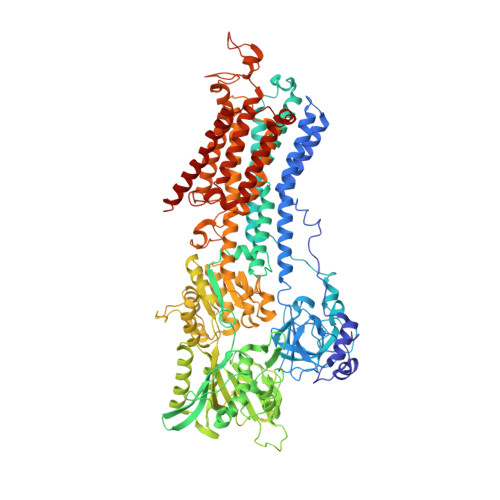Membrane-protein crystals for neutron diffraction.
Sorensen, T.L.M., Hjorth-Jensen, S.J., Oksanen, E., Andersen, J.L., Olesen, C., Moller, J.V., Nissen, P.(2018) Acta Crystallogr D Struct Biol 74: 1208-1218
- PubMed: 30605135
- DOI: https://doi.org/10.1107/S2059798318012561
- Primary Citation of Related Structures:
6HEF - PubMed Abstract:
Neutron macromolecular crystallography (NMX) has the potential to provide the experimental input to address unresolved aspects of transport mechanisms and protonation in membrane proteins. However, despite this clear scientific motivation, the practical challenges of obtaining crystals that are large enough to make NMX feasible have so far been prohibitive. Here, the potential impact on feasibility of a more powerful neutron source is reviewed and a strategy for obtaining larger crystals is formulated, exemplified by the calcium-transporting ATPase SERCA1. The challenges encountered at the various steps in the process from crystal nucleation and growth to crystal mounting are explored, and it is demonstrated that NMX-compatible membrane-protein crystals can indeed be obtained.
- Department of Molecular Biology and Genetics - DANDRITE, Aarhus University, Gustav Wieds Vej 10, DK-8000 Aarhus C, Denmark.
Organizational Affiliation:




















